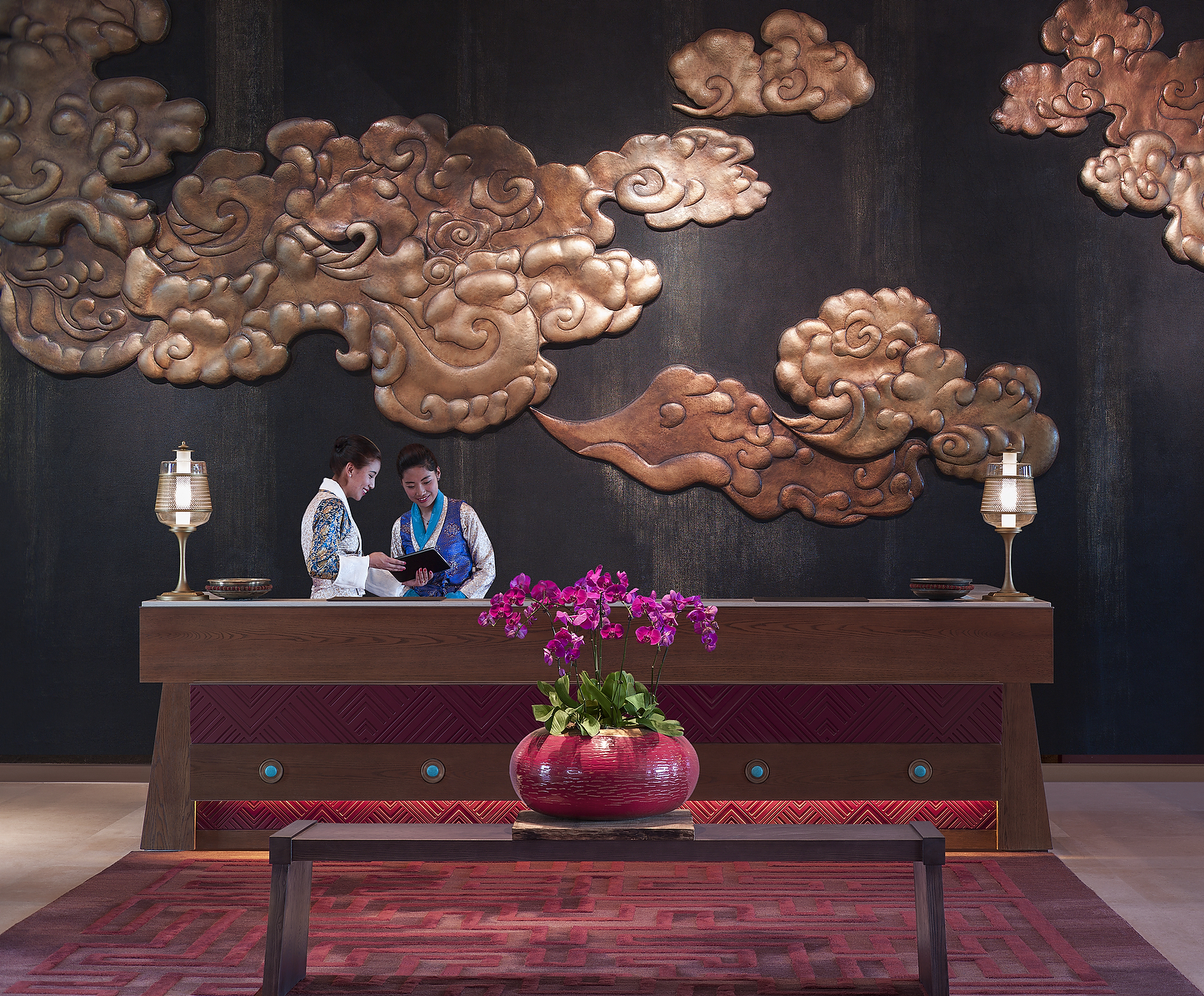
When you're ready
to see the world ...
New York 212-757-5858
Florida 954-766-8899
| < Back to Features & Offers |
Stepping Back in Time: Shanghai, Shangri-La & Lhasa
“ .. it is a prospect of much charm that I unfold for you — long tranquillities, calmness and profundity, ripeness and wisdom .. and, most precious of all, you will have Time." Lost Horizon - James Hilton
The idyllic countryside of Yunnan Province in southernmost China has inspired Chinese poets and painters for generations, with its snow-capped mountains, rice terraces, lakes and deep gorges. On this journey, step back in time and explore the Ming Dynasty's art and architecture, harmonious cultures and philosophies, and exquisite regional beauty. Then, fly higher to Tibet - former home of the present Dalai Lama.
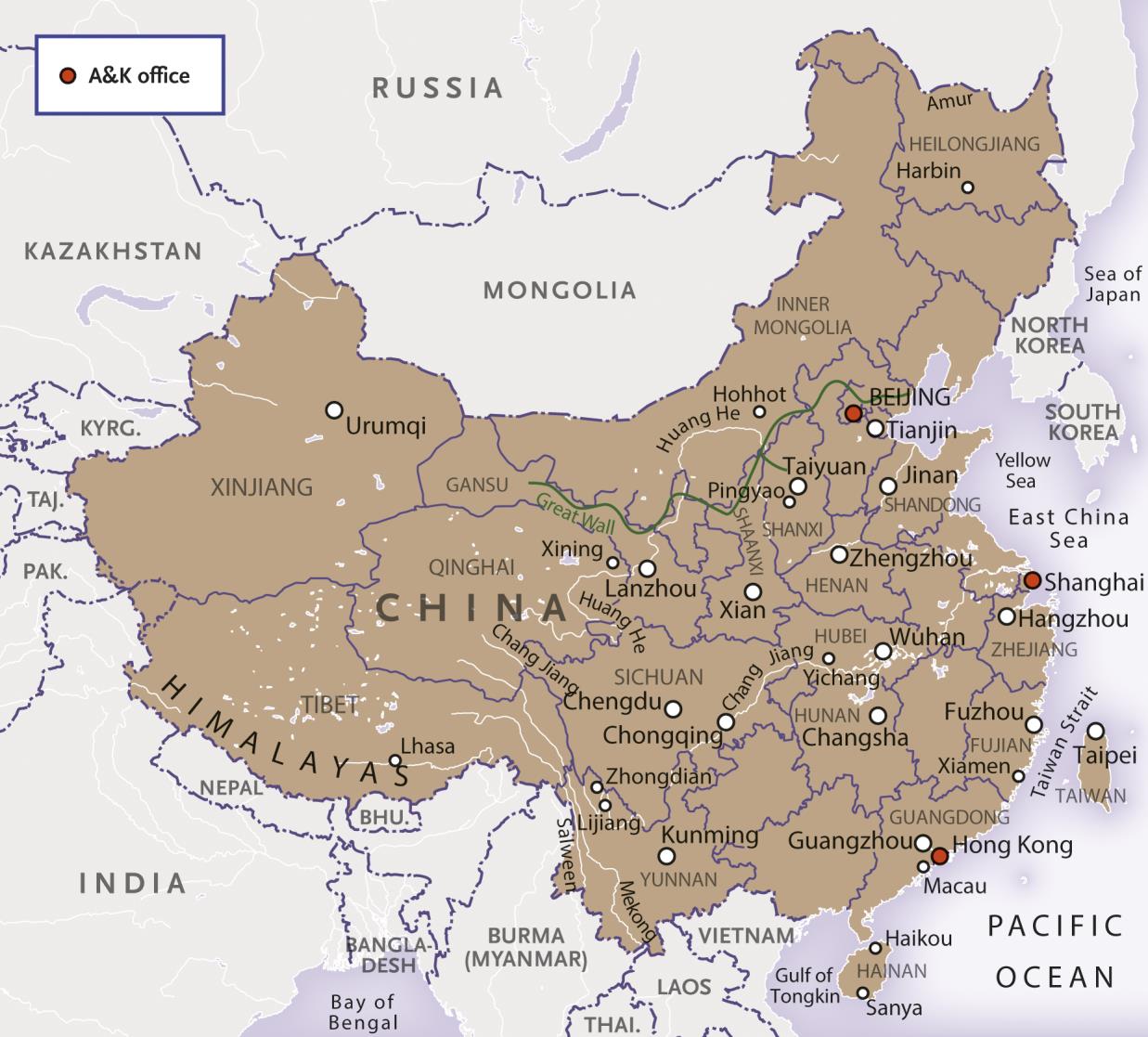
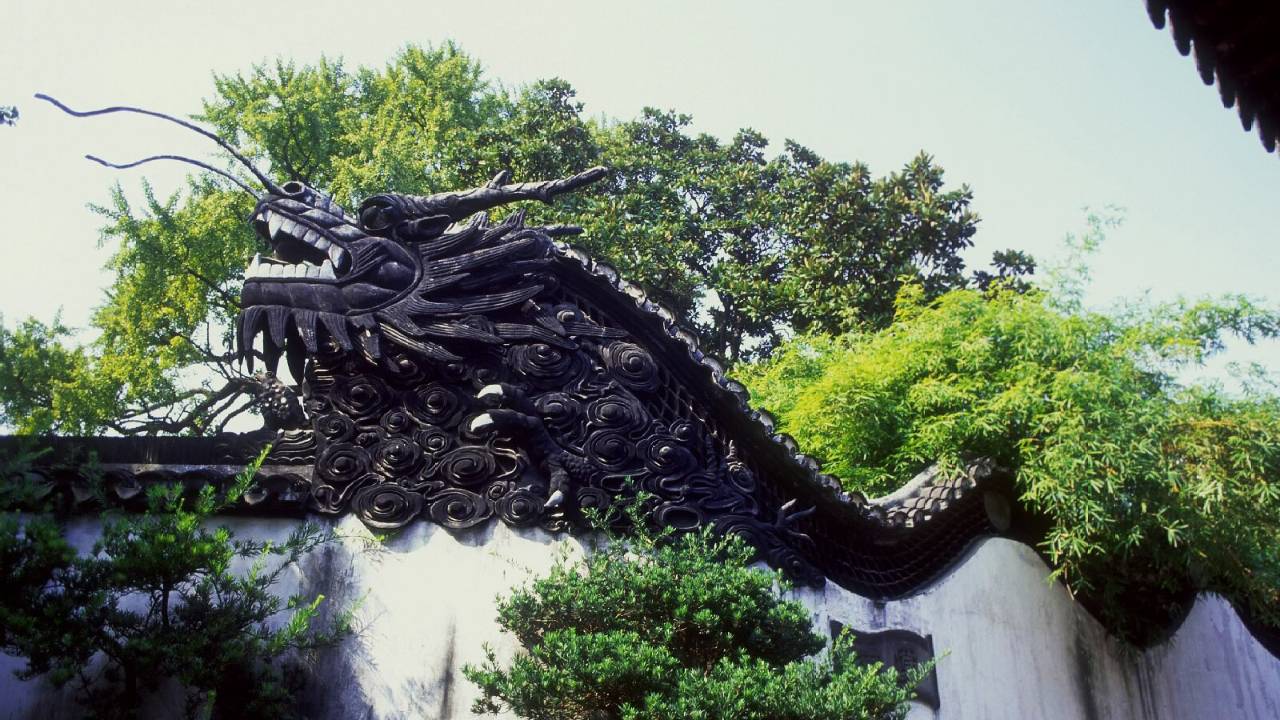
DAY 1 - Arrive Shanghai
Today, arrive Shanghai Pudong International Airport. After clearing immigration and customs, you will be met and privately transferred to your hotel, The Peninsula Shanghai. This elegant flagship hotel occupies a prime location with direct river frontage on Shanghai’s historic "Bund" - thus offering spectacular views and access to prime shopping and dining.
The Peninsula Shanghai
DAY 2 - Shanghai
Meet at the hotel lobby this morning and enjoy a full day of sightseeing in Shanghai. First, visit Shanghai Old Town, the original Chinese settlement of Shanghai. The old town was established during the Ming Dynasty (1368 – 1644) and was originally walled, built in 1553 to defend the city against the frequent raids made by Japanese pirates. In 1911 the wall was pulled down to allow for expansion from within the crowded warren of alleys that had developed within the Old Town area. The Old Town evokes the flavor of Ming Shanghai – a warren of alleys running in all directions, crowded shops and stalls selling all manner of goods, and stately buildings with sweeping, swallow-tail roofs, typical to southern China. The Old Town is centered on a beautiful garden - Yu Yuan Garden - that was constructed between the years 1559 – 1577 by a rich merchant who dedicated the garden to his parents. This act of filial piety was typical of Chinese social behavior. Confucian philosophy stressed the importance of relationships with the family – notably children to parents – as the most important relationship (in a network of relationships) holding together society. Following the visit enjoy a tea appreciation in a traditional teahouse.
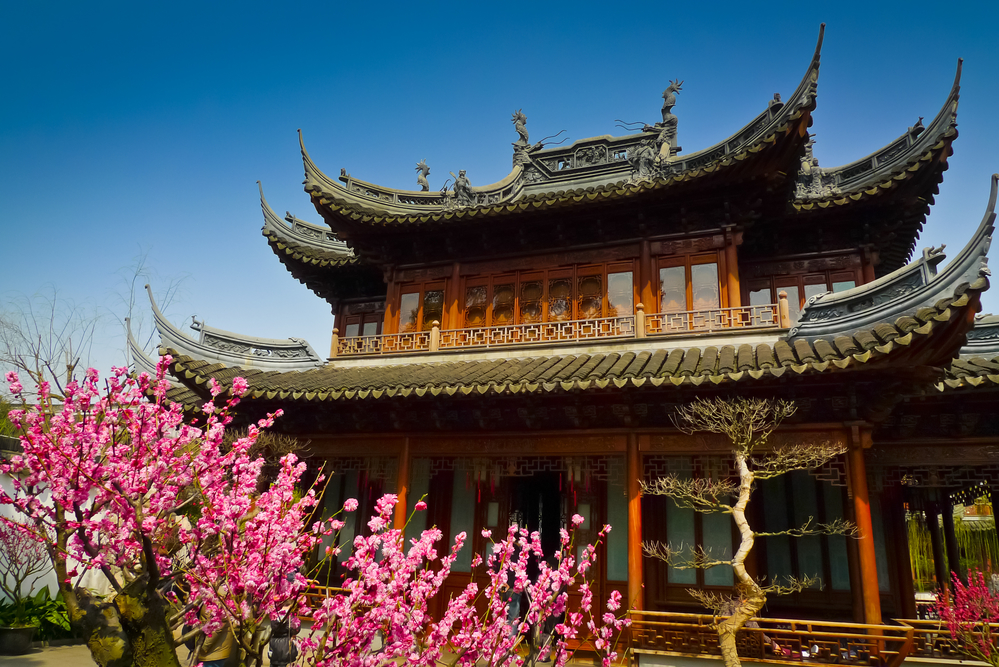
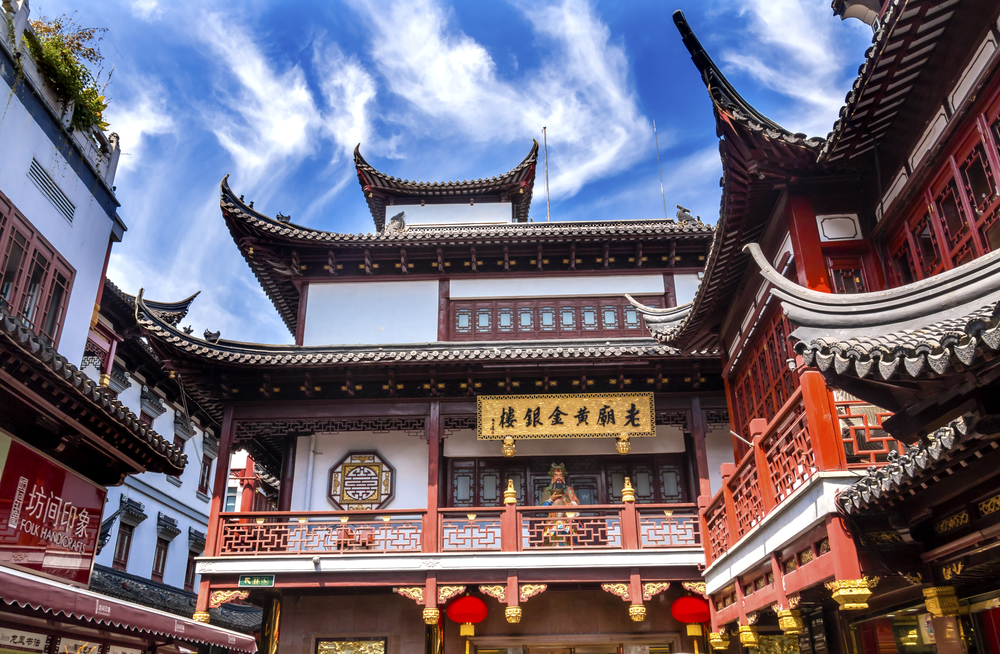
Next visit the Shanghai Museum, whose state-of-the-art structure is a commanding presence in the heart of the People’s Square. Within this strikingly modern facade lies one of the finest collections of ancient Chinese art ever amassed, with a special emphasis on rich, rare and high quality bronzes and ceramics. Wander through its many galleries to discover a varied array of calligraphy, sculptures, furniture, paintings, and coins as well as foreign and minority art and artifacts.
Stroll along the tree-lined avenues of the French Concession, 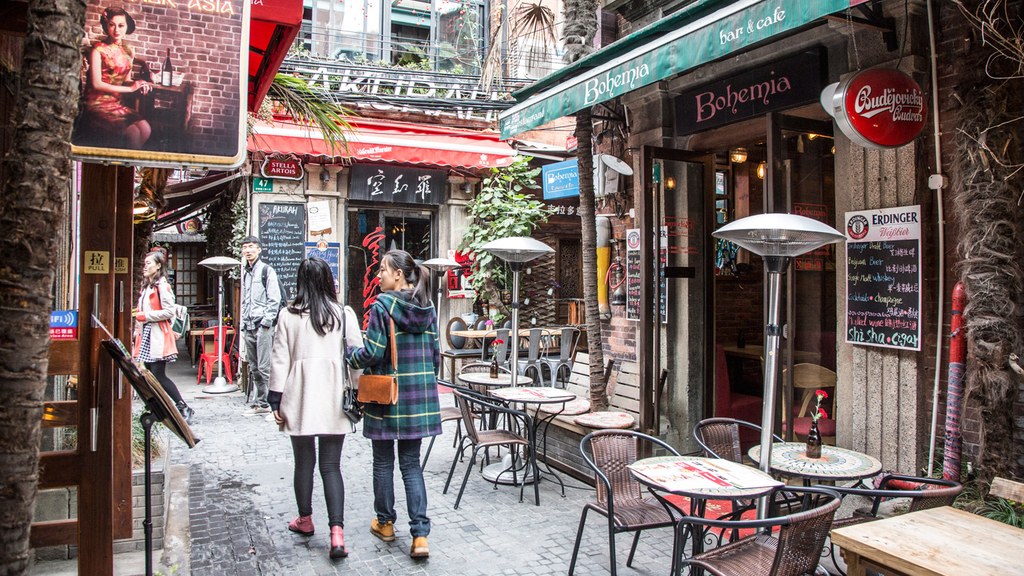 one of five European settlement areas established after the 1842 Treaty of Nanjing. Its Gallic élan of charming facades and alfresco cafes is an enduring testament to the city’s old moniker, “Paris of the East.” A melange of architectural styles, from art deco, neo-gothic, teutonic and southern antebellum, speaks of a pre-World War II Shanghai, where the world’s most foremost architects convened and created.
one of five European settlement areas established after the 1842 Treaty of Nanjing. Its Gallic élan of charming facades and alfresco cafes is an enduring testament to the city’s old moniker, “Paris of the East.” A melange of architectural styles, from art deco, neo-gothic, teutonic and southern antebellum, speaks of a pre-World War II Shanghai, where the world’s most foremost architects convened and created.
Return then to the Bund. This waterfront area sweeping along the Huangpu River has become the center of Shanghai’s foreign business establishment and the symbol of Shanghai’s identity as a modern city. The name “bund” is derived from an Anglo-Indian term meaning “muddy embankment,” but after the 1920’s the area became a showcase for foreign enterprises, with impressive Western-style banks, trading houses, hotels, consulates, and clubs filling the shoreline, with a promenade along the river. British, French, American, German, Japanese, and Russian facilities were built here in styles ranging from Neo-Classical to Art Deco, giving the area a pronounced European flavor. Foreign enterprises and facilities were forced out after the Communist victory in 1949, and many of the buildings were occupied by government offices and banks. More recently many of the stately old buildings have been renovated in recognition of their status as historical and tourist sites. Welcome Dinner to be arranged.
The Peninsula Shanghai
Meal Plan: Breakfast, Lunch & Dinner
DAY 3 - Shanghai / Lijiang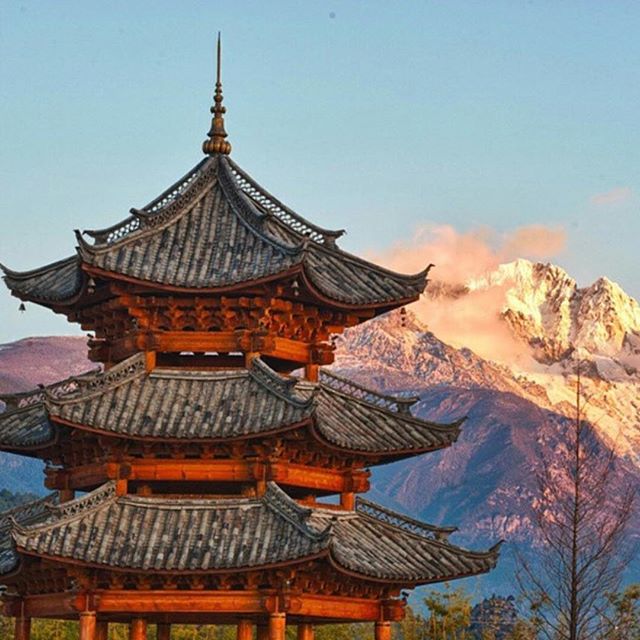
Departure transfer to Shanghai Hongqiao airport. Fly Shanghai/Lijiang via MU#5819. Arrival Lijiang Airport. After claiming your bags, you will be welcomed by a representative and transferred to your hotel. Located 2,000 metres above sea level, Banyan Tree Lijiang lies in the heart of China, just 40 minutes away from Lijiang Airport and 15 minutes from the historical town of Dayan, regarded as the Venice of the Orient for its canals and bridges. It is also situated to the south of the majestic Jade Dragon Snow Mountain. Step into any one of the Banyan Tree Lijiang's 55 single-storey stunning garden villas and be inspired by the breathtaking views offered by the towering Jade Dragon Snow Mountain peaks surrounding the villas. Exotic pink stone and grey bricks on the exterior of each villa are accented by all-natural materials, including teak and red clay roof tiles. Prepare to be inspired if you take a leisurely evening walk in the nearby Lijiang Old Town. Lunch and dinner are to be arranged.
Banyan Tree Lijiang
Meal Plan: Breakfast, Lunch & Dinner
DAY 4 - Lijiang
Meet at hotel lobby for a full day of sightseeing of Lijiang to 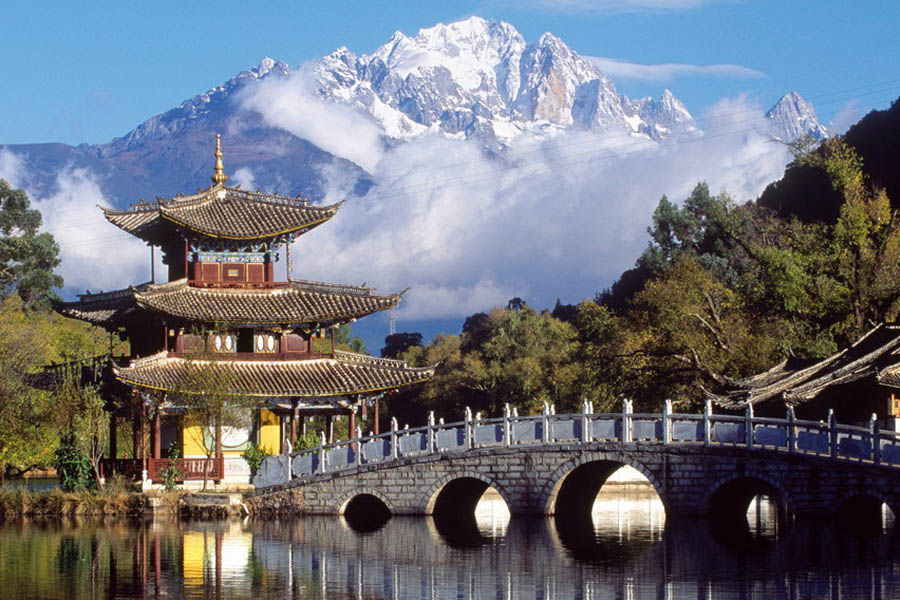 include: a drive to Jade Dragon Snow Mountain followed by the dance show of “Impressions of Lijiang“ (show time 11:00-12:15, approximately 1 hour drive each way). The snow-covered mountain episode of “Impressions of Lijiang” is a large-scale on-site performance jointly directed by Zhang Yimou, Wang Chaoge and Fan Yue. It was first staged officially at the foot of Jade Dragon Snow Mountain in Yunnan’s Lijiang on July 23, 2006. After about 400 farmer performers from 10 local ethnic groups had participated in several months of rehearsals, this performance was presented as an extravaganza integrating the aboriginal charm and the natural landscape of the Jade Dragon Snow Mountain.
include: a drive to Jade Dragon Snow Mountain followed by the dance show of “Impressions of Lijiang“ (show time 11:00-12:15, approximately 1 hour drive each way). The snow-covered mountain episode of “Impressions of Lijiang” is a large-scale on-site performance jointly directed by Zhang Yimou, Wang Chaoge and Fan Yue. It was first staged officially at the foot of Jade Dragon Snow Mountain in Yunnan’s Lijiang on July 23, 2006. After about 400 farmer performers from 10 local ethnic groups had participated in several months of rehearsals, this performance was presented as an extravaganza integrating the aboriginal charm and the natural landscape of the Jade Dragon Snow Mountain.
Continue to the village of Yuhu which is the Naxi village where Dr. Joseph Rock made his home. Joseph Rock was an Austrian-American writer/researcher/medical doctor who lived in the region from 1921 – 1949. He was a contributor to National Geographic Magazine writing on the beauty of Yunnan province. For 27 years he kept roaming around Lijiang's countryside documenting its flora as well as producing the first rigorous works on Naxi ethnology.
Then visit the Baisha Village and Baisha 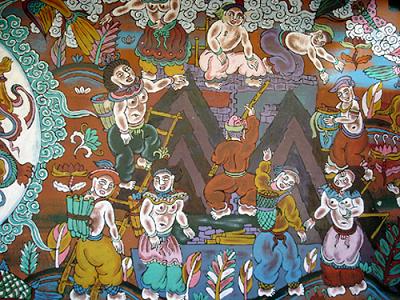
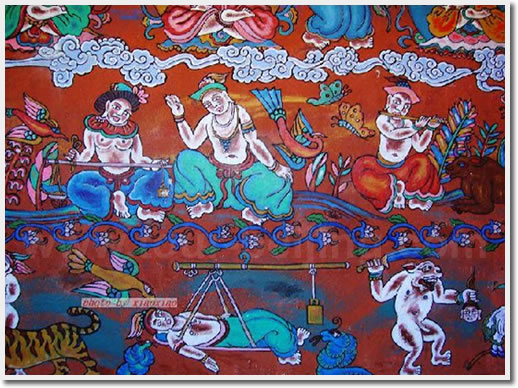 Murals. The village of Baisha (White Sand) lies on the vast plain that unfolds at the base of the Yuelongxue Shan (Jade Dragon Snow Mountain). Visitors may find the village a bit of a quandary. As past capital of the Naxi Kingdom before the Mongol invasions of the 13th century and site of the fascinating Baisha Murals, it now appears to be nothing more than a sleepy village of mud-packed and stone farm houses, dusty lanes and an annoying array of hawker stalls eager to pounce upon the bus loads of Chinese tourists now flocking to the Lijiang region. But suspend judgment and look beyond and around the obvious – Baisha is an important link to the historic integrity of the Naxi people and the Murals are – market withstanding – a worthwhile visit.
Murals. The village of Baisha (White Sand) lies on the vast plain that unfolds at the base of the Yuelongxue Shan (Jade Dragon Snow Mountain). Visitors may find the village a bit of a quandary. As past capital of the Naxi Kingdom before the Mongol invasions of the 13th century and site of the fascinating Baisha Murals, it now appears to be nothing more than a sleepy village of mud-packed and stone farm houses, dusty lanes and an annoying array of hawker stalls eager to pounce upon the bus loads of Chinese tourists now flocking to the Lijiang region. But suspend judgment and look beyond and around the obvious – Baisha is an important link to the historic integrity of the Naxi people and the Murals are – market withstanding – a worthwhile visit.
The murals once numbered more than 220 and date to the mid-16th century when the Naxi culture had fully absorbed and melded a variety of outside philosophical influences – Tantric Buddhist teachings from neighboring Tibet, Mahayana traditions from China, and the teachings of Daoist texts also from China. Respect for certain aspects of each belief system were incorporated into the traditional animist beliefs of the Naxi. This unique rendering of faith was beautifully displayed in a series of exquisite murals that today number but a few housed in a lovely Ming period structure, the Babaoji Gong. Time, earthquakes and the destructive tendencies of the Cultural Revolution are responsible for the loss of the wondrous murals (save for the remaining pieces now on view). The murals on view represent the essential tenets of each belief system so that you have Daoist immortals, Mahayana Arhats, Tantric demons and Naxi Dongba all portrayed on a single canvas. Time should also be taken to wander and explore the village beyond the market stalls and the Murals.
You will also visit the Home and Clinic of Dr. Ho, a local legend 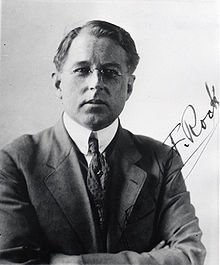
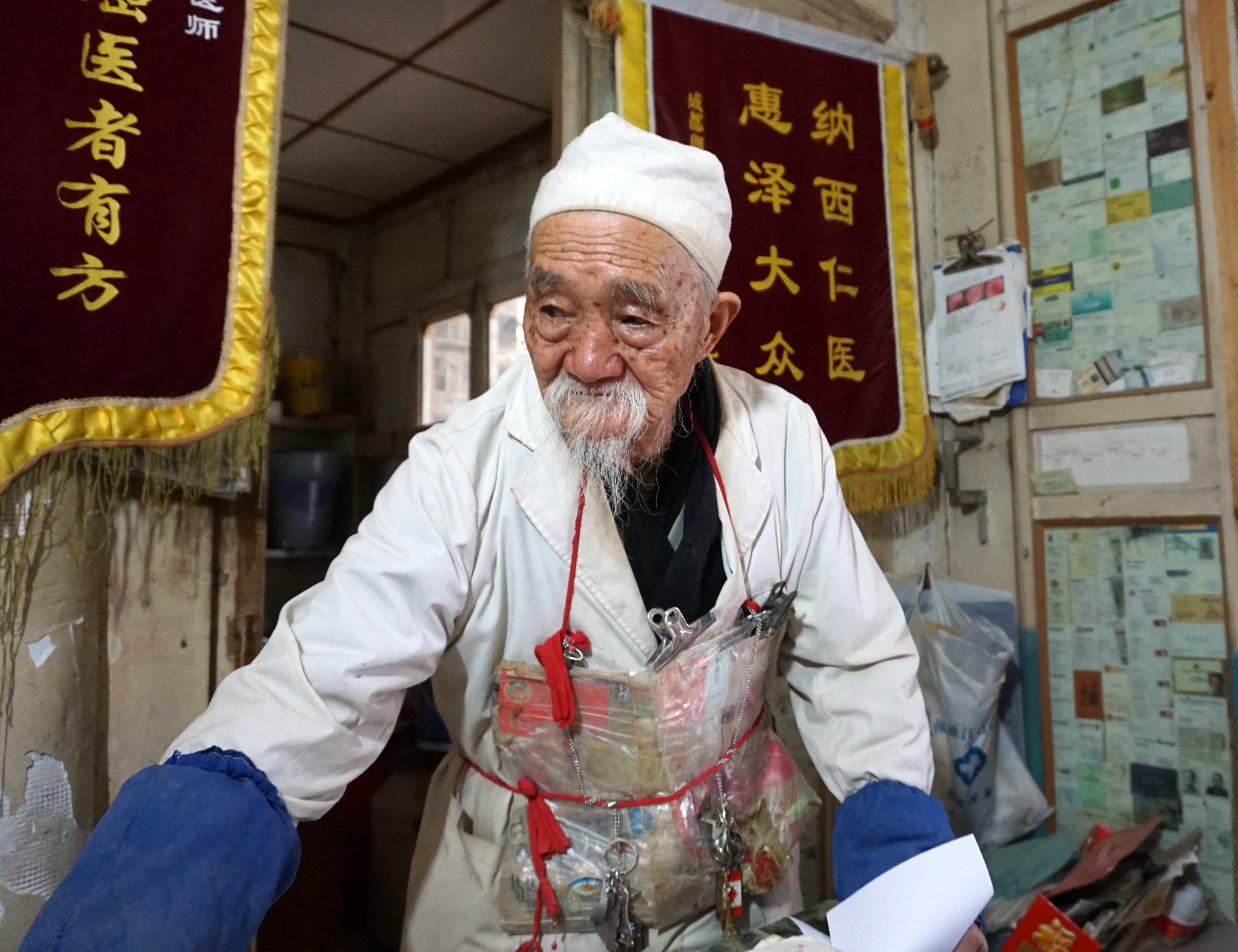 who has attracted the interest of journalists and travellers from around the world. Dr. Ho was born and raised in the Baisha region. As a child he often accompanied the Austrian-American adventurer, Joseph Rock, on plant gathering expeditions along the slopes of the Jade Dragon Snow Mountain (Yulongxue Shan). Through this contact with Dr. Joseph Rock and later, during World War II working with U.S. airmen from the Flying Tigers, Dr. Ho learned to speak English fluently. He studied medicine in Nanjing and upon graduation returned to his home region. The turbulence of the late 1950s and 1960s caught up to Dr. Ho, which, as he will tell you, landed him in "hot water" suffering the ravages of political struggle sessions and re-education. With the reopening of China in the 1980s Dr. Ho began to come into contact with the occasional traveller who found their way to his door, and today he has become a celebrity of some note. His work with herbal medicines extracted from wild plants growing on the slopes of the Jade Dragon Snow Mountain has attracted attention from scientists and physicians in the West, and he has been featured in a few documentaries featuring the Lijiang region. The most high profile of these was a segment in Michael Palin's recent BBC series on the lands of the Himalayas. Dr. Ho (at this writing 95 years of age) is a hale and healthy man who loves to meet visitors and talk about his life and work. He is a truly unique character who embodies the somewhat ethereal character of the Lijiang region. *
who has attracted the interest of journalists and travellers from around the world. Dr. Ho was born and raised in the Baisha region. As a child he often accompanied the Austrian-American adventurer, Joseph Rock, on plant gathering expeditions along the slopes of the Jade Dragon Snow Mountain (Yulongxue Shan). Through this contact with Dr. Joseph Rock and later, during World War II working with U.S. airmen from the Flying Tigers, Dr. Ho learned to speak English fluently. He studied medicine in Nanjing and upon graduation returned to his home region. The turbulence of the late 1950s and 1960s caught up to Dr. Ho, which, as he will tell you, landed him in "hot water" suffering the ravages of political struggle sessions and re-education. With the reopening of China in the 1980s Dr. Ho began to come into contact with the occasional traveller who found their way to his door, and today he has become a celebrity of some note. His work with herbal medicines extracted from wild plants growing on the slopes of the Jade Dragon Snow Mountain has attracted attention from scientists and physicians in the West, and he has been featured in a few documentaries featuring the Lijiang region. The most high profile of these was a segment in Michael Palin's recent BBC series on the lands of the Himalayas. Dr. Ho (at this writing 95 years of age) is a hale and healthy man who loves to meet visitors and talk about his life and work. He is a truly unique character who embodies the somewhat ethereal character of the Lijiang region. *
Longquan Village and Dragon Spring Ancestral Temple – Returning from 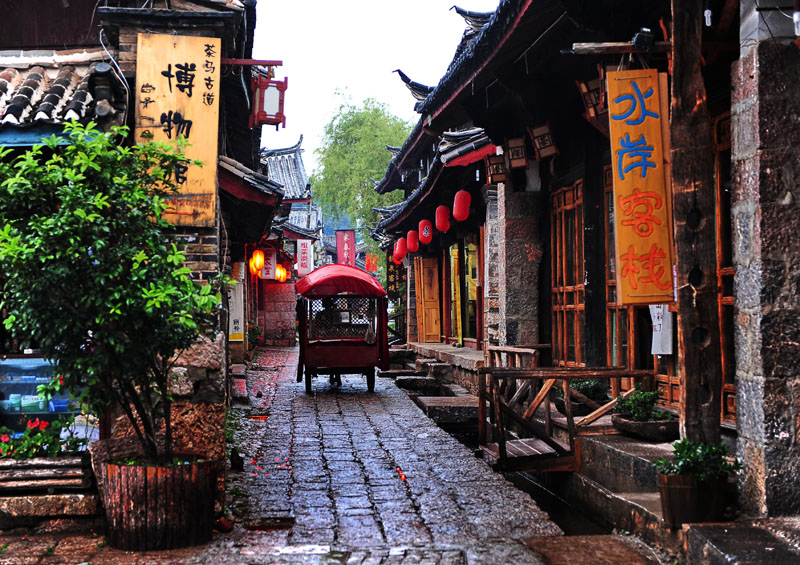 the Baisha Plain back to Lijiang, time should be taken to make a turn off the main road and endure some bumps along a country path leading to the lovely village of Longquan (Dragon Spring). Although next to Lijiang, Longquan is years removed in spirit and atmosphere. Where Baisha is commercial and sometimes overrun with tourists, Longquan is tranquil and relaxed, a typical Naxi settlement in tune with the cycle of the seasons. Dating back more than 500 years, the stone houses, cobble lanes and bridges that grace the village are a reminder of what Lijiang must have been like centuries past. The Naxi, while welcoming and relaxed, go about their business leaving you, the visitor, free to wander and explore this charming link to another world and culture.
the Baisha Plain back to Lijiang, time should be taken to make a turn off the main road and endure some bumps along a country path leading to the lovely village of Longquan (Dragon Spring). Although next to Lijiang, Longquan is years removed in spirit and atmosphere. Where Baisha is commercial and sometimes overrun with tourists, Longquan is tranquil and relaxed, a typical Naxi settlement in tune with the cycle of the seasons. Dating back more than 500 years, the stone houses, cobble lanes and bridges that grace the village are a reminder of what Lijiang must have been like centuries past. The Naxi, while welcoming and relaxed, go about their business leaving you, the visitor, free to wander and explore this charming link to another world and culture.
Banyan Tree Lijiang
Meal Plan: Breakfast, Lunch & Dinner
DAY 5 - Lijiang
Meet in the hotel lobby and enjoy another full day of sightseeing in Lijiang. The most beautiful setting in Lijiang is Black Dragon Pool Park (also called “Heilongtan”) a lush setting of weeping willows, pine, chestnut and many flowering ornamental trees. The setting is framed by mountains and centered on the Black Dragon Pool, a large pond fed by mountain springs that bubble up at the site. This verdant swath of parkland is further embellished by a series of ornate pavilions and bridges that complete this idyllic scene.
Time should be taken to walk the perimeter pathway that circles the main pond – this provides you with a pleasing overview of the entire park. Walking along the pathway also affords you with fine views of several exquisite structures brought to the park in the 1970s and 1980s from Fuguosi, a magnificent Tibetan Tantric Temple that is located 19 miles west of Lijiang. The most impressive of these buildings is the Wufenglou (Five Phoenix Tower) that was transported in stages to the park from 1976 – 1979. This stunning hall dates from the early 17th century and is an outstanding example of Ming architecture. The park draws numerous visitors both local and from outside Lijiang and is often frequented by people who relax and enjoy a picnic lunch in one of the scenic pavilions that grace the park setting.
Continue on to the Dongba Museum a fine facility that exhibits some fascinating examples of Naxi religious traditions as well as a series of old photographs of Lijiang’s Old Town. The term Dongba refers to both the shaman or wise man of Naxi society and the pictographic script that is a core element defining the literary culture of the Naxi. The shaman figure is one selected to be the keeper of secrets, the conduit to the world of nature. The script is one of the last examples of a pictographic script in use today. The Dongba script is used only by the Dongba shaman and is directly tied to the ancient belief system of the people. Joseph Rock spent many years compiling a lexicon of Dongba script pictographs and their meaning. The photographs on view are drawn from both the collection of Joseph Rock as well as other old photographs that capture the vitality and charm of the Old Town in the early decades of the 20th century.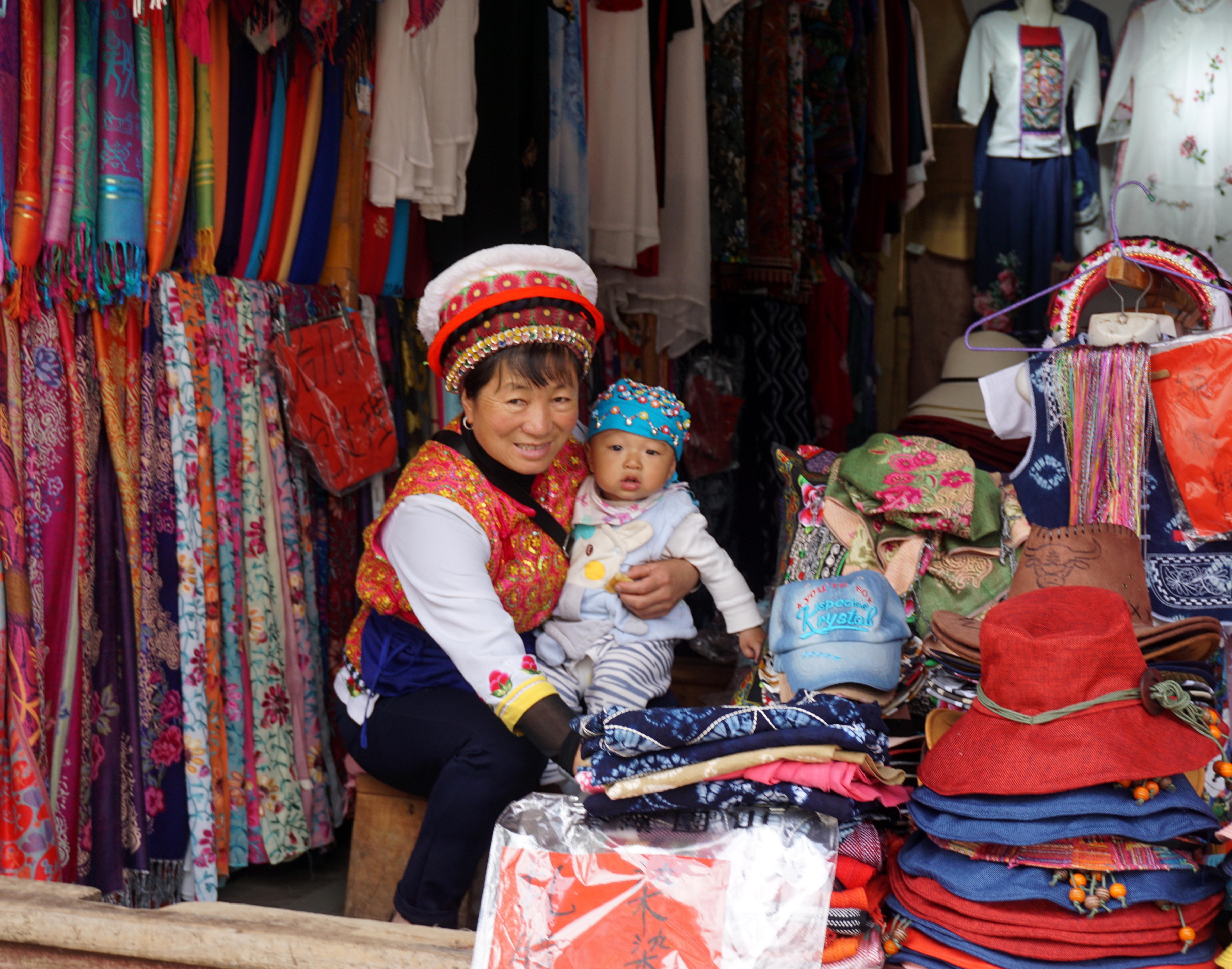
Then visit Wangulou Pagoda - a monumental building located in the ancient city of Lijiang. The tower is an example of wooden Dougong architecture with sets of brackets on top of the columns supporting the beams within and the roof eaves without. A set that is cushioned with trapezoidal block is called Duo, and one that consists of tiers of outstretching arms is called gong. The tower has five stories and five tiers of eaves. The top story has 13 angles, representing the 13 peaks of the Jade Dragon Snow Mountains. Painted inside the tower are 2,300 auspicious patterns, representing the harmony and unity of the 23 ethnic groups living in Lijiang. The colourful murals in the tower are redolent of the traditional Dongba culture of the Naxi people. Climb to “Wangu Lou” Tower to enjoy a panoramic view of Lijiang Old Town.
Proceed to a walking tour of the Lijiang Old Town. Measuring two kilometres by two kilometres the rectangular enclosure of cobble lanes and stone and timber houses that make up the Old Town of Lijiang ranks among the most picturesque and memorable of city settings in all of China. The Old Town (gazetted by UNESCO as a World Heritage Site) dates to the 13th century when the Mongol forces of Kublai Khan swept southward through Yunnan province as they set out to consolidate their control over China. The original capital of the Naxi kingdom at Baisha was moved to Dayan (today’s Lijiang) and since that time has remained the most distinctive example of Naxi culture. The best way to experience the charm of the Old Town is to get out and walk it - the labyrinth of alleys, while seemingly confusing, all lead to the rectangular central square market that marks the centre of the Old Town. Each day the square becomes a focal point of commerce with hawker stalls lining the perimeter selling local handicrafts, savory snack foods and assorted bric-a-brac.
Banyan Tree Lijiang
Meal Plan: Breakfast, Lunch & Dinner
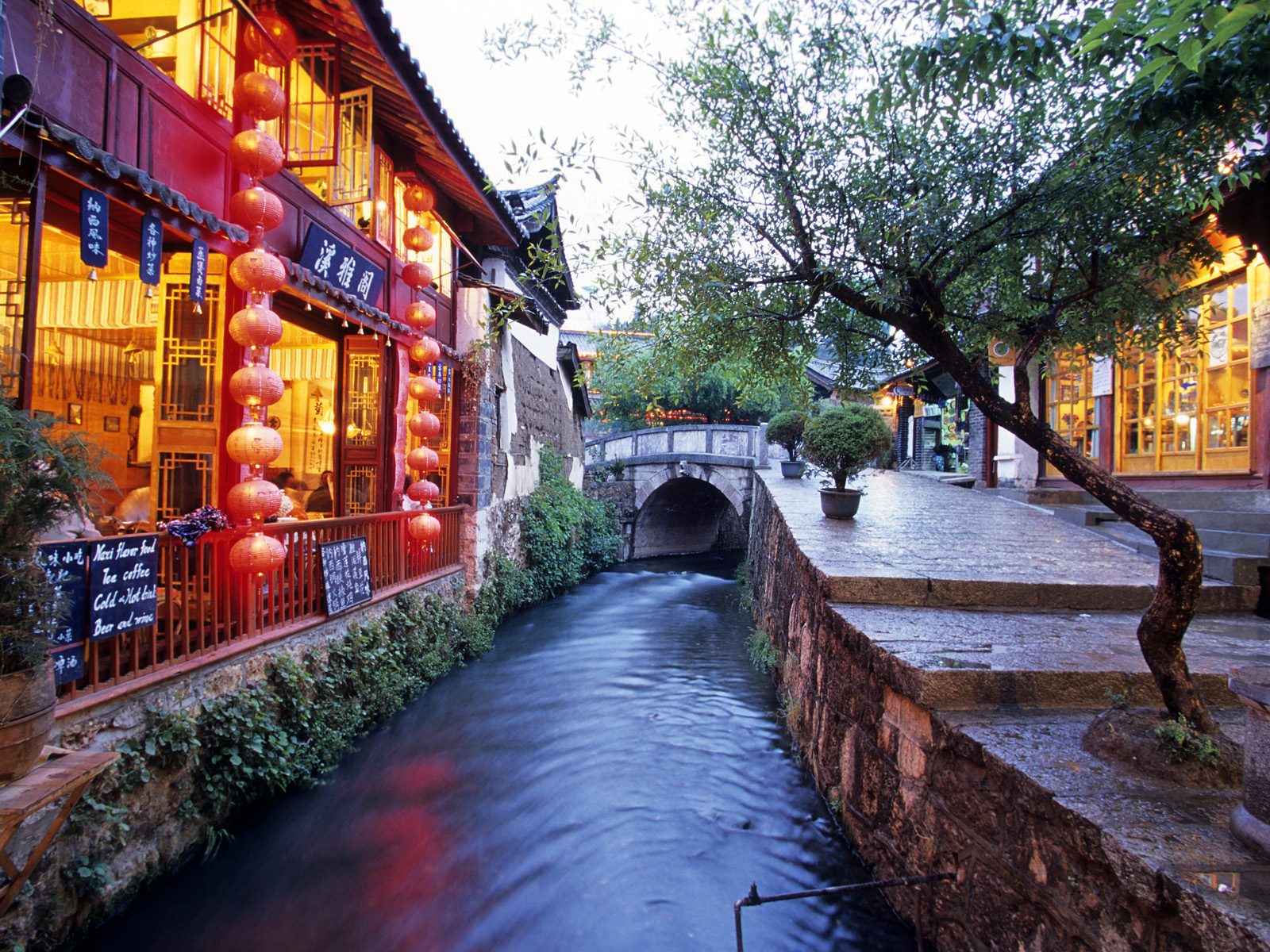
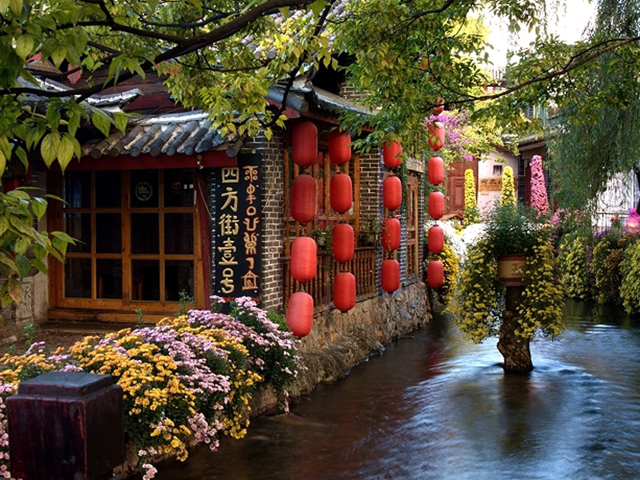
DAY 6 - Lijiang / Tacheng
Transfer overland from Lijiang to Tacheng (200 km, approximately 4 hours) with an en route visit to the charming village of Shigu (Stone Drum), which rises above the Yangzi River on a hillslope that commands a fine panoramic vista of mountain and river. Shigu is a typical Naxi village with cut stone block alleys fronted by daub and timber houses. Naxi women sit quietly about their tasks dressed in blue tunics and draped with their sheepskin cloaks.
Two important historic landmarks make Shigu nationally famous and now draw a growing number of Chinese travelers. One is the Memorial to the Red Army Crossing of the Yangzi River in the winter of 1934 - 1935 during the Long March. Under heavy pressure and attack from Chiang Kai Shek’s KMT forces, a group of Red Army soldiers were assisted by local Naxi settlers in crossing the winter waters of the Yangzi. This act of friendship is commemorated by an exquisite bronze sculpture that honours the crossing and those Naxi who aided the Red Army soldiers. The other memorial is the Stone Drum (Shigu) from which the village gets its name. This white marble piece is believed to have been carved in the mid-16th century to remember a battle fought between an allied force of Han Chinese and Naxi against an invasive force from Tibet. The Han Naxi alliance prevailed but the memorial, while recognizing the victory, is a lament against the destructive effects of battle. The “Tai Ping Ge” is a “Song for Peace” - a call for men to live as brothers. A visit to Shigu should also include a walk through its daily produce market that sets up along the road at the entrance to the Red Army Memorial. The market is a bustling affair that draws not only local Naxi traders and farmers but also groups of Yi and Tibetan women who come down from the highlands to sell their products in the local market.
Also visit the “First Bend” in the Yangzi River, a major geographic landmark for all Chinese. 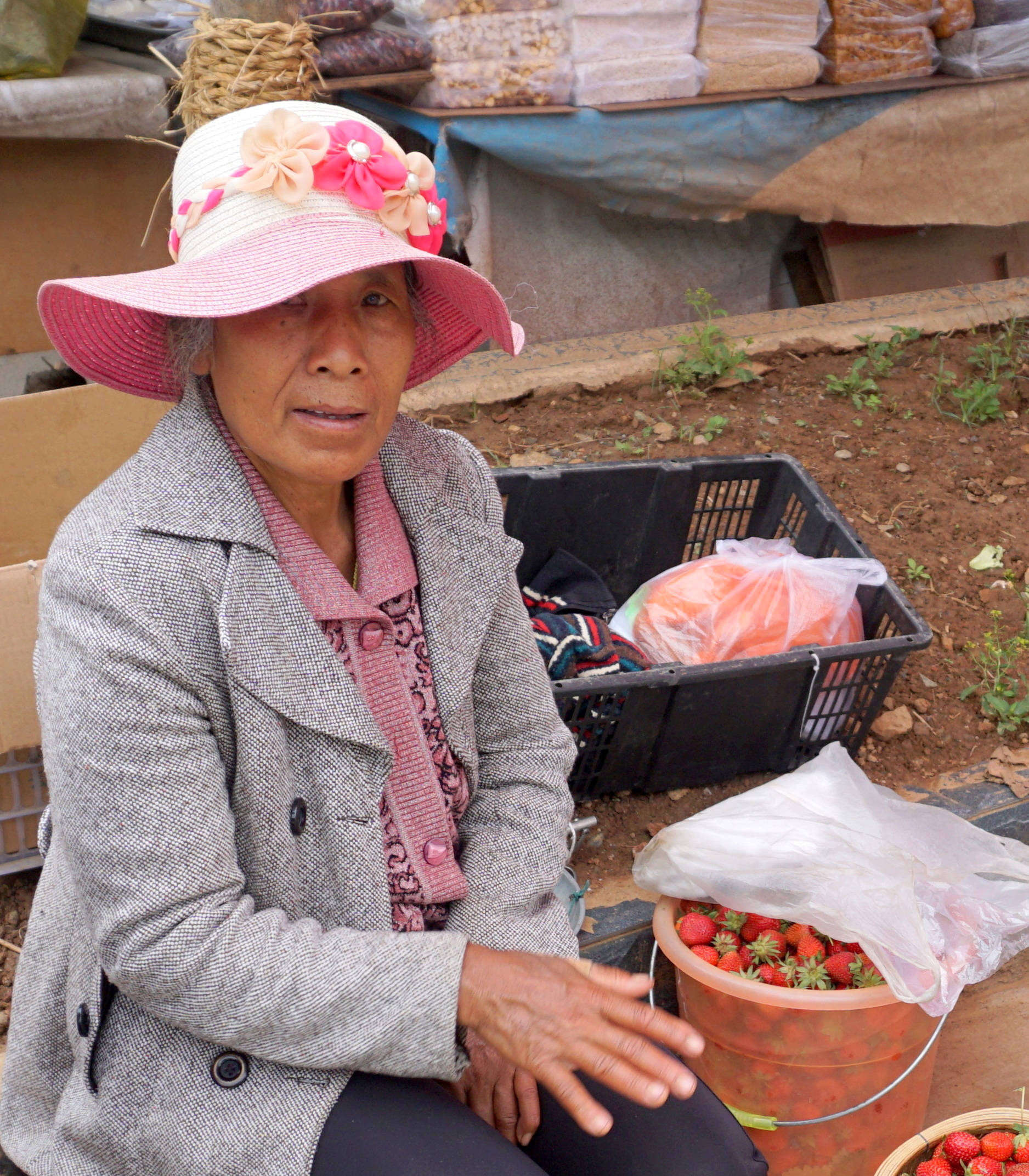 The drive takes approximately 80 minutes and provides you with some wonderful opportunities to enjoy the vast panorama of northwest Yunnan. Leaving Lijiang pass, Lashi Hai (Tiger Lake) is a scenic lake dotted along its shoreline with Naxi villages. The lake area is noted for its fine fruit orchards with the apples grown here regarded as the finest in Yunnan. Climbing up to a pass at more than 8,600 feet, you begin to descend along a switchback road to the valley of the Yangzi, which, in Yunnan, is called the Jinshajiang River (Golden Sands River). The unfolding vista is as stunning as the rugged mountains guarding the watery ribbon of river, which unfold onto a patchwork quilt of farm fields planted in wheat, tobacco, sunflowers, corn and orchards of tangerines and pomegranates. The elevation here at 5,900+ feet favors a warm microclimate that allows for the production of subtropical fruits. The “First Bend” marks the point where the Yangzi, after having flowed directly south from the high, icy plains of Tibet, turns sharply north for over 60 miles before turning east and continuing its course into Sichuan Province. The Chinese believe the “First Bend” is a significant spot as the two other great river systems which flow parallel with the Yangzi out of Tibet – the Mekong and the Salween Rivers – both flow out of China into Southeast Asia. Afterwards, you continue drive to Tacheng and check in.
The drive takes approximately 80 minutes and provides you with some wonderful opportunities to enjoy the vast panorama of northwest Yunnan. Leaving Lijiang pass, Lashi Hai (Tiger Lake) is a scenic lake dotted along its shoreline with Naxi villages. The lake area is noted for its fine fruit orchards with the apples grown here regarded as the finest in Yunnan. Climbing up to a pass at more than 8,600 feet, you begin to descend along a switchback road to the valley of the Yangzi, which, in Yunnan, is called the Jinshajiang River (Golden Sands River). The unfolding vista is as stunning as the rugged mountains guarding the watery ribbon of river, which unfold onto a patchwork quilt of farm fields planted in wheat, tobacco, sunflowers, corn and orchards of tangerines and pomegranates. The elevation here at 5,900+ feet favors a warm microclimate that allows for the production of subtropical fruits. The “First Bend” marks the point where the Yangzi, after having flowed directly south from the high, icy plains of Tibet, turns sharply north for over 60 miles before turning east and continuing its course into Sichuan Province. The Chinese believe the “First Bend” is a significant spot as the two other great river systems which flow parallel with the Yangzi out of Tibet – the Mekong and the Salween Rivers – both flow out of China into Southeast Asia. Afterwards, you continue drive to Tacheng and check in.
Part of a mixed Tibetan/Lisu farming community, Songtsam Tacheng lays claim to a perfect climate and the region's most fertile land. With its dense, old growth forests and unique ecosystem, this is a destination of discovery.
The Songtsam Tacheng Lodge
Meal Plan: Breakfast, Lunch & Dinner
Day 7 - Tacheng / Zhongdian (Shangri-La)
Early morning hike to the Tacheng Nature Reserve to see the Snub-nosed Monkey. After lunch, transfer overland from Tacheng to Shangri-La. Enjoy the dramatic drive as you climb from about 6,500 feet up to 11,100 feet, following the upper reaches of the Yangzi River. Arrival Shangri-La and transfer to the hotel to check in. Located in the Shangri-La hills, Songtsam Retreat, a member of the MGallery collection, offers exceptional boutique accommodation in a distinctly Tibetan style. Boasting a breathtaking location in this beautifully remote corner of China, unique architecture, and stunning design, the retreat is comprised of 75 rooms. Songtsam Retreat at Shangri-La is located 25 minutes from Diqing Airport and five minutes from Songzanlin Monastery, and offers spectacular views and superb dining.
MGallery Songtsam Retreat at Shangri-La
Meal Plan: Breakfast, Lunch & Dinner
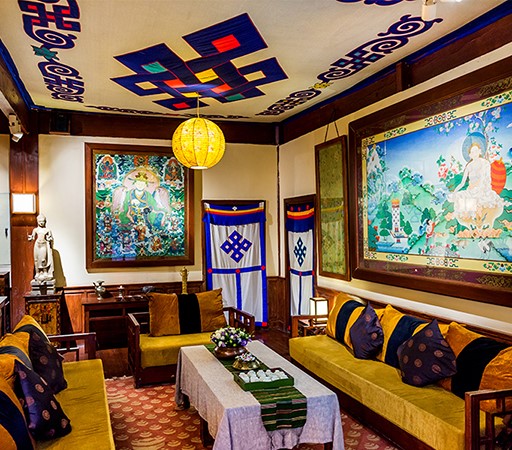
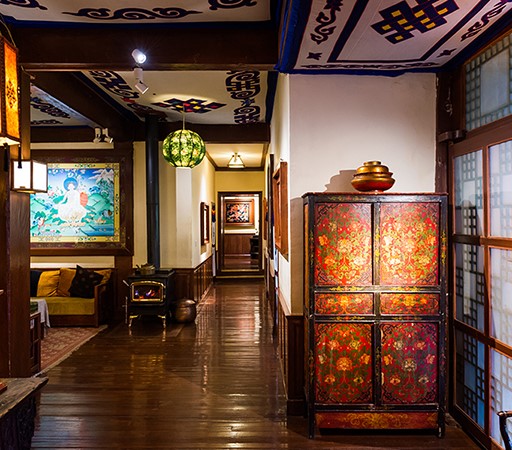
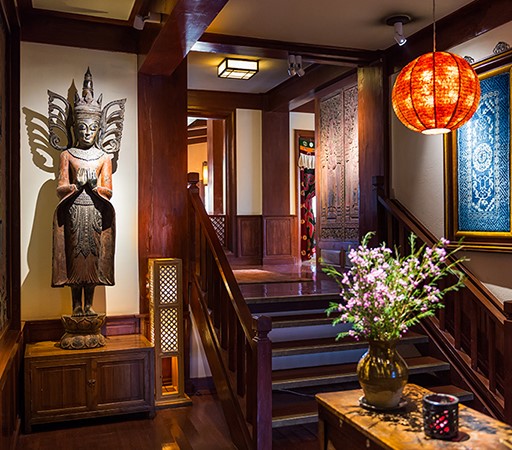
DAY 8 - Zhongdian (Shangri-La)
Meet at the hotel lobby and enjoy a full day sightseeing Zhongdian and Songzanlin Monastery, the largest Tibetan monastery in Yunnan province. It was constructed in the 17th century under the theocratic administration of The Great Fifth - the Fifth Dalai Lama. The title Dalai Lama means ‘Great Sea of Learning or Wisdom’. The monastery had more than 4,000 monks in residence at its peak in the 19th century. This monastery is a place of residence, study and meditation. Meet with one of the living Buddhas and tour the different halls and shrines. The snow covered peaks combined with the chanting and incense from the monastery brings to life the “Shangri-La” described in Hilton’s Lost Horizon.
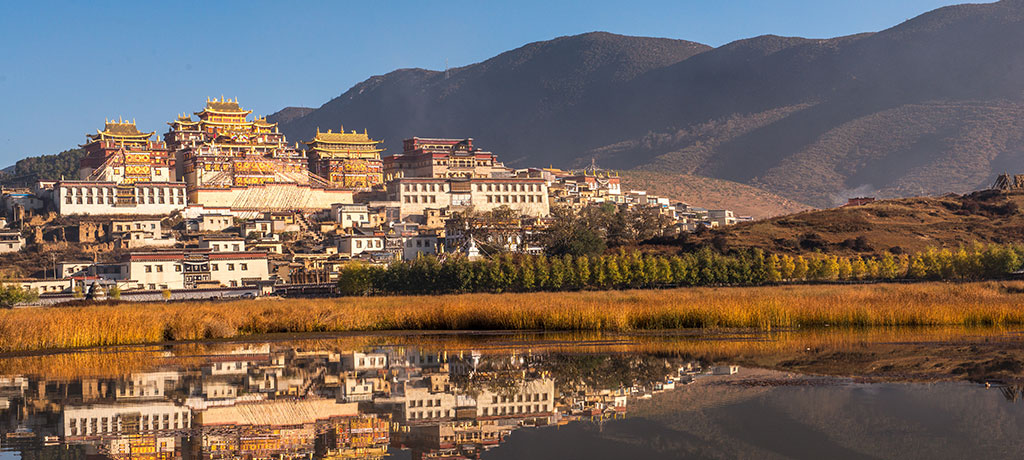
Continue to Napa Lake, or Napa Hai Forest Reserve. Often called Asia’s greatest “flower and plant nursery” the Zhongdian region supports the greatest number and widest variety of temperate plant life on earth. This is nowhere better represented than at Napa Hai and the vast swath of land that is framed by forested mountains and centered on a sweeping meadow that floods each spring and summer to form a vast, shallow lake. The drive to Napa Lake takes approximately 30 minutes and follows the Yunnan/Tibet Highway. The road rises above the rolling meadowland entering onto a small range of mountains that are home to a remarkable variety of plants. Now protected by the provincial government, this delicate ecosystem includes such common garden species (in their original wild form) as rose, gentian, iris, holly, primrose, briar rose, edelweiss and the most elusive of all flowers the lovely Himalayan blue poppy. During the summer months these mountains block the free flow of rainwater that accumulates on the meadowland. The flooded plain takes on the appearance of a vast lake that can, in years of heavy rain, extend for several kilometers.
Continue to Zhongdian Old Town - The old town quarter of Zhongdian is a pleasant excursion to another time and place. Its winding alley ways laid in stone are not unlike the yellow brick road to Oz, and leaving the newer construction behind, you enter an enclave of tradition. Wood and daub houses, smoke charred Tibetan shrines and winding cobble alleys paint a portrait of the past. Here Tibetan, Naxi and Han families live and work together recalling what Yunnan must have been like not too long ago. Visit a Tibetan Family in the village.
According to legend, a venerable Buddhist monk took the way to Tibet to carry out a 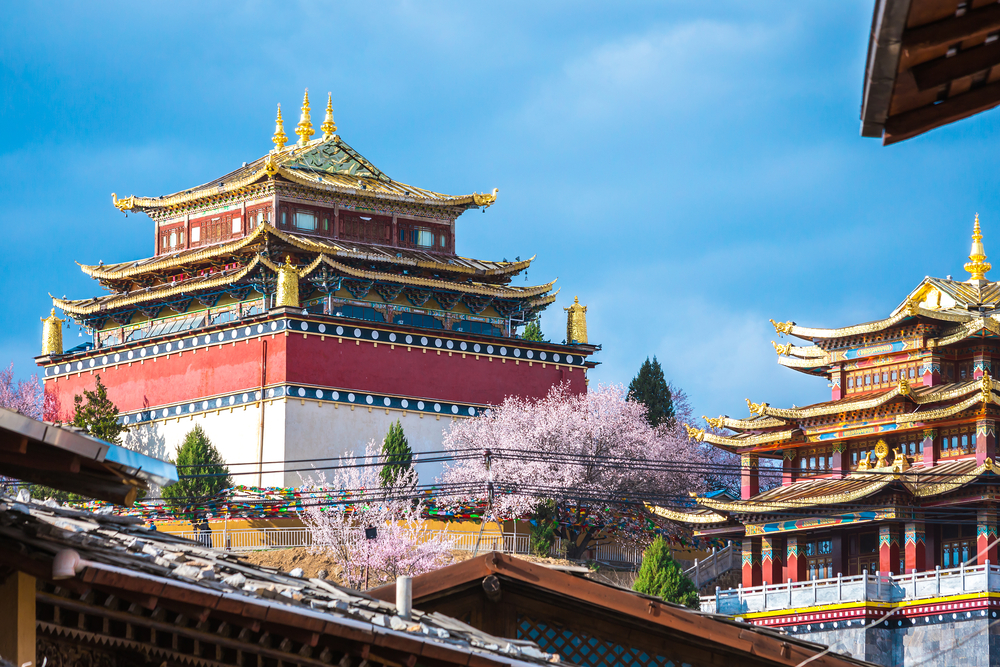 pilgrimage with his goat in the countryside. After 3 years into the trip, they stayed in the Valley of Ringha where the goat refused to continue on. The monk then counts that the goat had found there a sacred place, and decided to build a temple right there on the hill in the middle of this marvelous valley. Except for this legend, the origin of the Ringha Temple (also known as Temple of Five Wisdom Buddhas) still remains a mystery. It keeps an essential place in the Tibetan community and is considered one of the five most important Tibetan monasteries in Yunnan Province. With a history of over 700 years, the temple was visited by the 5th Dalai Lama. While the principal buildings were destroyed during the Cultural Revolution (1966-1976), the villagers raised funds to rebuild the main lobby with a simple and modest structure. Unfortunately, there are only 3 small original statues in the temple nowadays.
pilgrimage with his goat in the countryside. After 3 years into the trip, they stayed in the Valley of Ringha where the goat refused to continue on. The monk then counts that the goat had found there a sacred place, and decided to build a temple right there on the hill in the middle of this marvelous valley. Except for this legend, the origin of the Ringha Temple (also known as Temple of Five Wisdom Buddhas) still remains a mystery. It keeps an essential place in the Tibetan community and is considered one of the five most important Tibetan monasteries in Yunnan Province. With a history of over 700 years, the temple was visited by the 5th Dalai Lama. While the principal buildings were destroyed during the Cultural Revolution (1966-1976), the villagers raised funds to rebuild the main lobby with a simple and modest structure. Unfortunately, there are only 3 small original statues in the temple nowadays.
Several religious ceremonies are associated with the Ringha Temple. The worshippers come here to pray for good health, to heal diseases and to bless their children. To accumulate good karma, chickens and the other animals are taken and left at liberty. After that, the worshippers do the kora clockwise around the hill and pray for their greetings. You will see thousands of Tibetan prayer flags floating in the wind around the monastery. While descending, you will go through a trimmed stairway of prayer wheels with the inscriptions of the mantra “Om Mani Padme Hung” on every cylinder, invoking the attention and the blessings of Chenresig, the incarnation of compassion. While turning these flags and wheels, the faithful ones accumulate merit, replace their negative actions by positive actions, and improve their karma for their next life.
This evening enjoy a traditional Tibetan hotpot dinner at a local restaurant followed by an evening visit to the Old Town Square to take in the nightly music and dancing that is performed by local residents.
Mgallery Songtsam Retreat at Shangri-la
Meal Plan: Breakfast, Lunch & Dinner
DAY 9 - Zhongdian (Shangri-La) / Lhasa
Morning meeting at the hotel lobby and departure transfer to the airport for your short flight to Lhasa. After claiming your baggage, you will be met by a representative, who will be waiting for you. You will then be transferred to the hotel. Shangri-La Hotel Lhasa is situated amidst striking mountain landscape and is just minutes from the Morbulingka Palace and the Potala Palace, both part of the "Historic Ensemble of the Potala Palace" - a UNESCO World Heritage Site. Balance of the day at leisure to acclimatize.
Shangri-La Hotel, Lhasa
Meal Plan: Breakfast
DAY 10 - Lhasa
Meet in the hotel lobby and enjoy a full day of sightseeing in Lhasa. Drepung Monastery was founded in 1416 by Jamyang Choje, a celebrated Yellow Hat lama. The name Drepung means “rice heap” which comes from the Sanskrit Dhanyakataka, the name of a stupa in south India where the Buddha first taught the Kalachakra tantra. Drepung is also the site of the burial stupas of the 2nd, 3rd, and 4th Dalai Lamas (only the Potala Palace has more). As one of Tibet’s Great Six monasteries, Drepung was an effective center of political power and by the time of the Fifth Dalai Lama, its population had grown to a staggering 10,000 monks and novices - easily the largest monastic institution in the world. It was renowned as a great center of learning and attracted the best and the brightest.
Then visit the Nyechung Temple, the former seat of the State Oracle until 1959. It is dedicated to Tara, a female bodhisattva, and contains many statues and paintings of Tara. The depictions of Tara are colored in natural pigments of white, blue, green and red. In the sutra-chanting chapel, there are 21 life-size bronze statues of Tara. Jokhang Temple, considered Tibet’s most sacred temple and thought to be Tibet’s first significant religious institution, is located in the very heart of Lhasa’s colorful Tibetan quarter. Jokhang is the focus of devotion day and night. It was built by Queen Songtsen Gampo in the 7th century to house a statue of the 8-year-old boy Buddha brought to Tibet by the Nepalese Princess Tritsun, with also a Sakyamuni Buddha statue brought by the Chinese Princess Wencheng. The Sakyamuni Buddha statue, originally presented to the Chinese emperor as a gift from the Queen of Bengal, is generally regarded as Tibet’s most sacred object. In the pilgrimage season, long lines of pilgrims wait patiently for hours just to touch their foreheads to the sacred image of Sakyamuni.
Next and not-to-miss -Barkhor 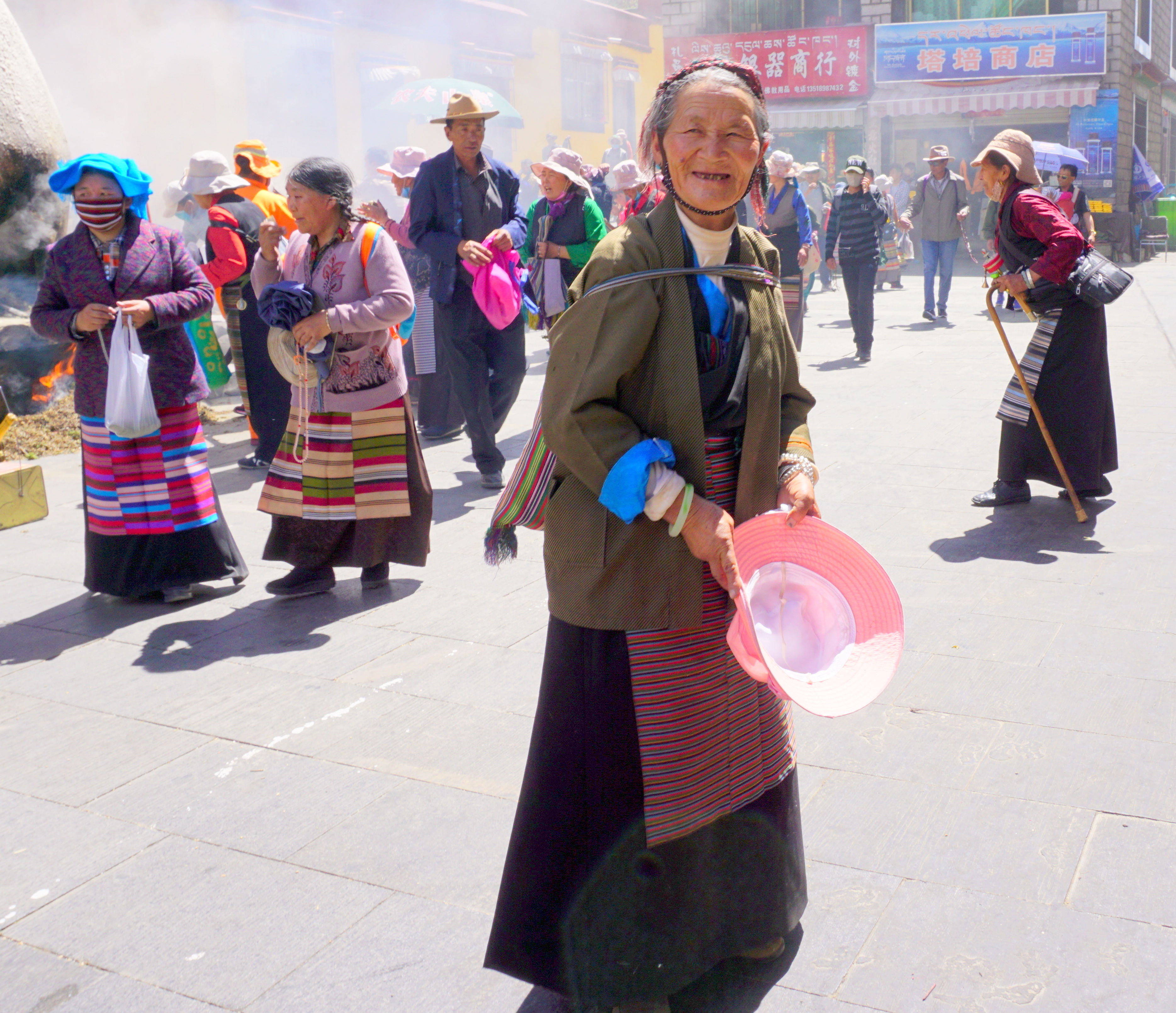 Street - the ancient round street surrounding the Jokhang Temple. The locals are always proud of it as a symbol of Lhasa. It's said that in 647, the first Tibetan King Songtsen Gampo (617 - 650) built the Jokhang Temple. Due to its magnificence, it quickly attracted thousands of Buddhist pilgrims. As a result, a trodden path appeared. That is the origin of Barkhor Street. Today still many pilgrims hold prayer wheels and walk clockwise there from dawn to dark. Also you can see some pilgrims walking or progressing body-lengths by body-lengths along the street. Even some of them are teenagers or have experienced thousands of miles' walk to reach this sacred place. The way they express their piety could make you understand the holiness of religion. Lunch at local restaurant. After sightseeing, transfer back to hotel.
Street - the ancient round street surrounding the Jokhang Temple. The locals are always proud of it as a symbol of Lhasa. It's said that in 647, the first Tibetan King Songtsen Gampo (617 - 650) built the Jokhang Temple. Due to its magnificence, it quickly attracted thousands of Buddhist pilgrims. As a result, a trodden path appeared. That is the origin of Barkhor Street. Today still many pilgrims hold prayer wheels and walk clockwise there from dawn to dark. Also you can see some pilgrims walking or progressing body-lengths by body-lengths along the street. Even some of them are teenagers or have experienced thousands of miles' walk to reach this sacred place. The way they express their piety could make you understand the holiness of religion. Lunch at local restaurant. After sightseeing, transfer back to hotel.
Shangri-La Hotel, Lhasa
Meal Plan: Breakfast & Lunch
DAY 11 - Lhasa
Meet in the hotel lobby for a full day of sightseeing in Lhasa. Sanggye Dhunghor (rock carvings) located in the southern part of Lhasa: a rock stands noticeably at over twenty meters tall and some 30 meters in width. The rock is covered with carved figures of Buddha, which vary in shape and color. Legend suggests that the carving of the rock began during the 7th century, and people in the city have it cleaned every few years.
Potala Palace, the former winter residence of the Dalai Lamas, is located in the northwest of the city on a south-facing hillside. Queen Songtsen Gampo, ruler of the Tufan kingdom had the palace built in the 7th century following his marriage to Princess Wencheng. Towering to a height of over 330 feet, the complex can be divided into three sections - the palaces (the “red palace” and “white palace” containing the burial stupas and residential quarters), the defensive fortifications and the gardens. Many of the palace walls are exquisitely covered with frescoes depicting episodes from Buddhist scriptures, landscapes from the surrounding area and historical events such as the arrival of the two Tang Dynasty princesses or the journey of the 5th Dalai Lama to Beijing.
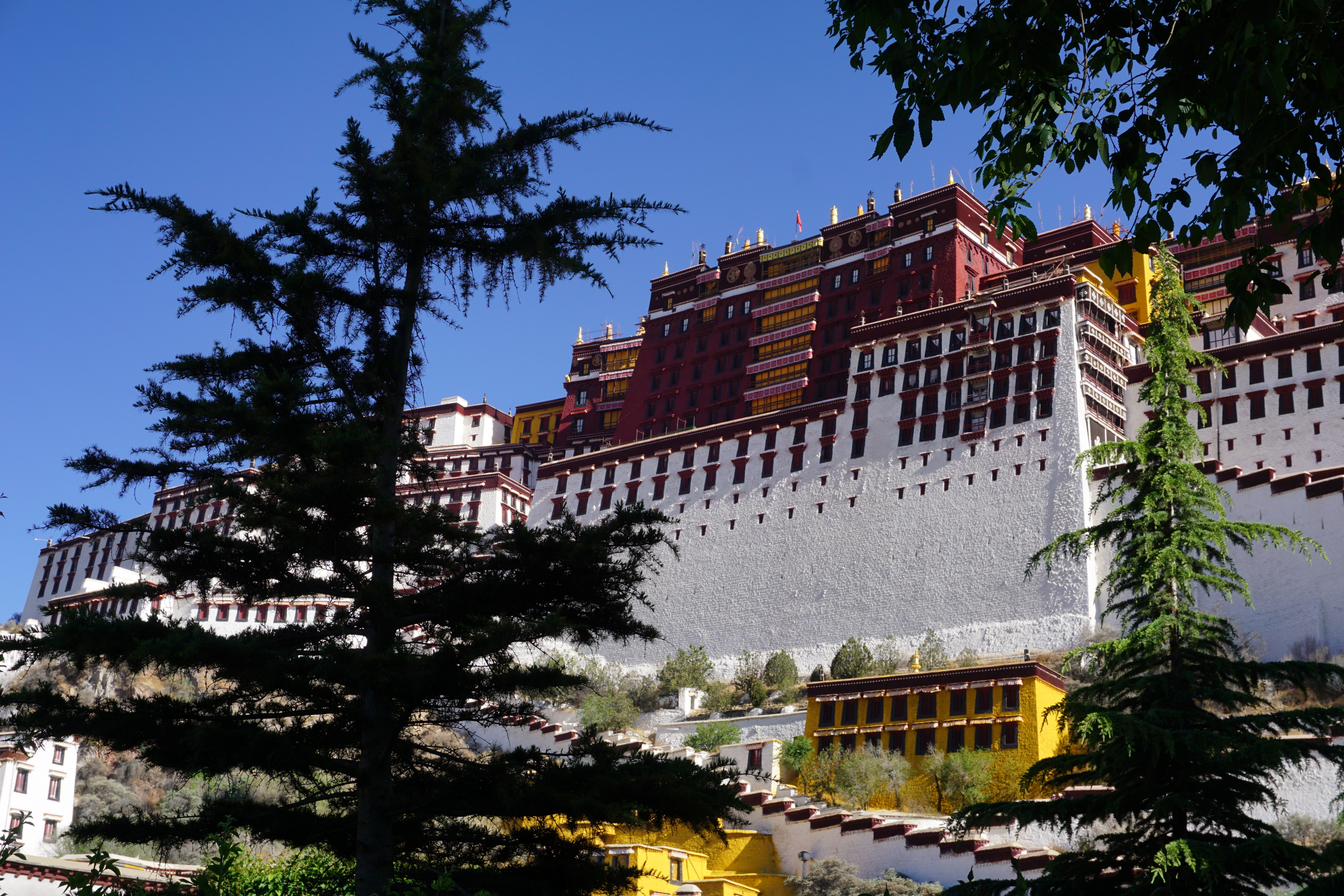
Sera Monastery - Sera is one of the great Gelugpa monasteries of Greater Tibet. Greater Tibet refers to the region that now includes modern Tibet, Qinghai province, southern Gansu, western Sichuan and northwest Yunnan. The five great monasteries are Sera and Drepung (in Lhasa), Gandan (outside of Lhasa), Taersi or Kumbum (in Xining, Qinghai) and Labrang (in Xiahe, Gansu) dating from the early 15th century.
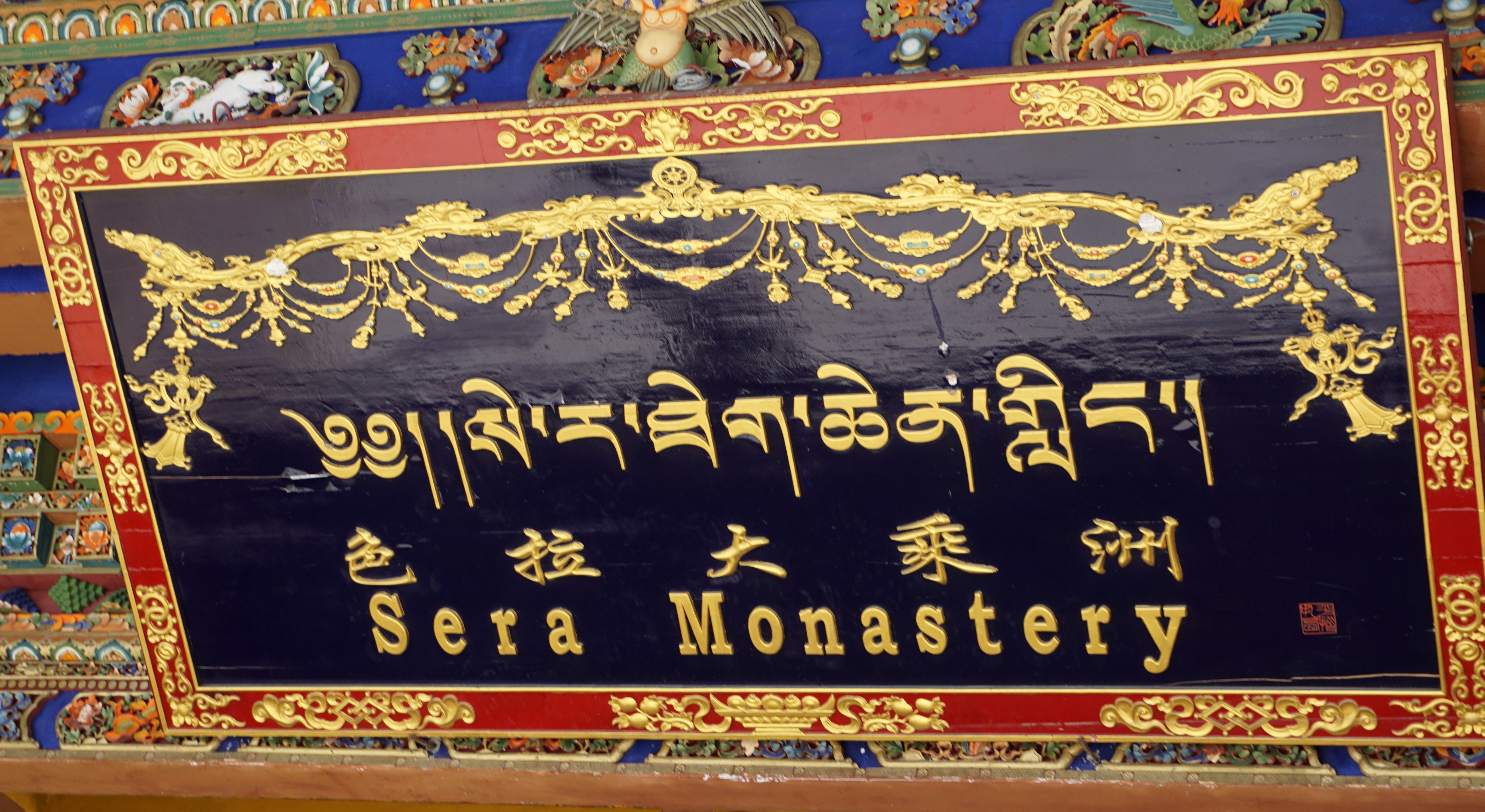
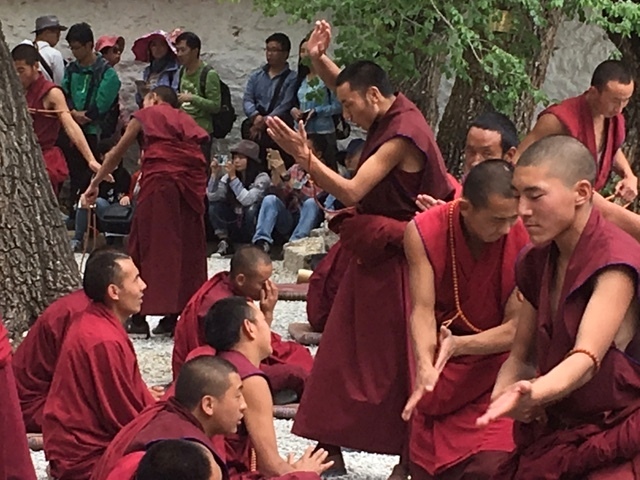 While not as old as the Drepung or Ganden Monasteries, Sera is respected for the rigorous education of its monks and the high level of intellectual discourse carried out within the monastery. According to local legend, Tsong Khapa, the great teacher and founder of the Gelugpa sect, visited the area with his two disciples. While here, he heard the whinnying of a horse and discovered the statue of the horse-headed deity, Hynagriva - sacred to all Tibetans. The monastery was built upon this site and the statue was enshrined within. The monastery houses three important colleges - Sera Me, Sera Je and Ngagpa colleges. All three date from the 15th and 16th centuries and are important centers for esoteric studies needed for the cultivation of the lama’s higher learning. The main area of the monastery is built around a Main Assembly Hall, the Tashomchen, covering an area of over 10,000 square feet. The Tashomchan is four stories high and includes four chapels - Arhats, Manjushri, Tsong Khapa and Chenrezi. There is also a magnificent image of Maitreya, the future incarnation of the Buddha.
While not as old as the Drepung or Ganden Monasteries, Sera is respected for the rigorous education of its monks and the high level of intellectual discourse carried out within the monastery. According to local legend, Tsong Khapa, the great teacher and founder of the Gelugpa sect, visited the area with his two disciples. While here, he heard the whinnying of a horse and discovered the statue of the horse-headed deity, Hynagriva - sacred to all Tibetans. The monastery was built upon this site and the statue was enshrined within. The monastery houses three important colleges - Sera Me, Sera Je and Ngagpa colleges. All three date from the 15th and 16th centuries and are important centers for esoteric studies needed for the cultivation of the lama’s higher learning. The main area of the monastery is built around a Main Assembly Hall, the Tashomchen, covering an area of over 10,000 square feet. The Tashomchan is four stories high and includes four chapels - Arhats, Manjushri, Tsong Khapa and Chenrezi. There is also a magnificent image of Maitreya, the future incarnation of the Buddha.
You will tour the Tashomchan and then sit down to watch the rousing display of debating which occurs most afternoons. Here teams of young monks quiz each other in matters of esoteric philosophy. The debating can become heated and you will see the questioning monk slapping his hands and gesticulating - meant to indicate his response to his opponent’s answers. While it may appear that the monks are “playing to the crowd” this is a time honored tradition.
Visit the Norbulingka Palace (the Jewel Park), one of the most relaxing pleasant places in Lhasa. It is a large 99 acre enclave on the outskirts of town covered with trees, ponds, gardens, palaces and pavilions. From the middle of the 18th century, Norbu Lingka was the official summer residence of the Dalai Lama and the major areas contained with the compound are residential palaces, opera grounds, government offices, and the forest section. During your visit you will have an opportunity to visit the residential palace of the present Dalai Lama that has been left exactly as it was when he fled to India in 1959. Lunch at local restaurant. After sightseeing, transfer back to hotel.
Shangri-La Hotel, Lhasa
Meal Plan: Breakfast & Lunch
DAY 12 - Lhasa / Shanghai
Morning is at leisure. This afternoon meet at the hotel lobby for departure transfer to the airport to commence your journey home via Shanghai Pudong.
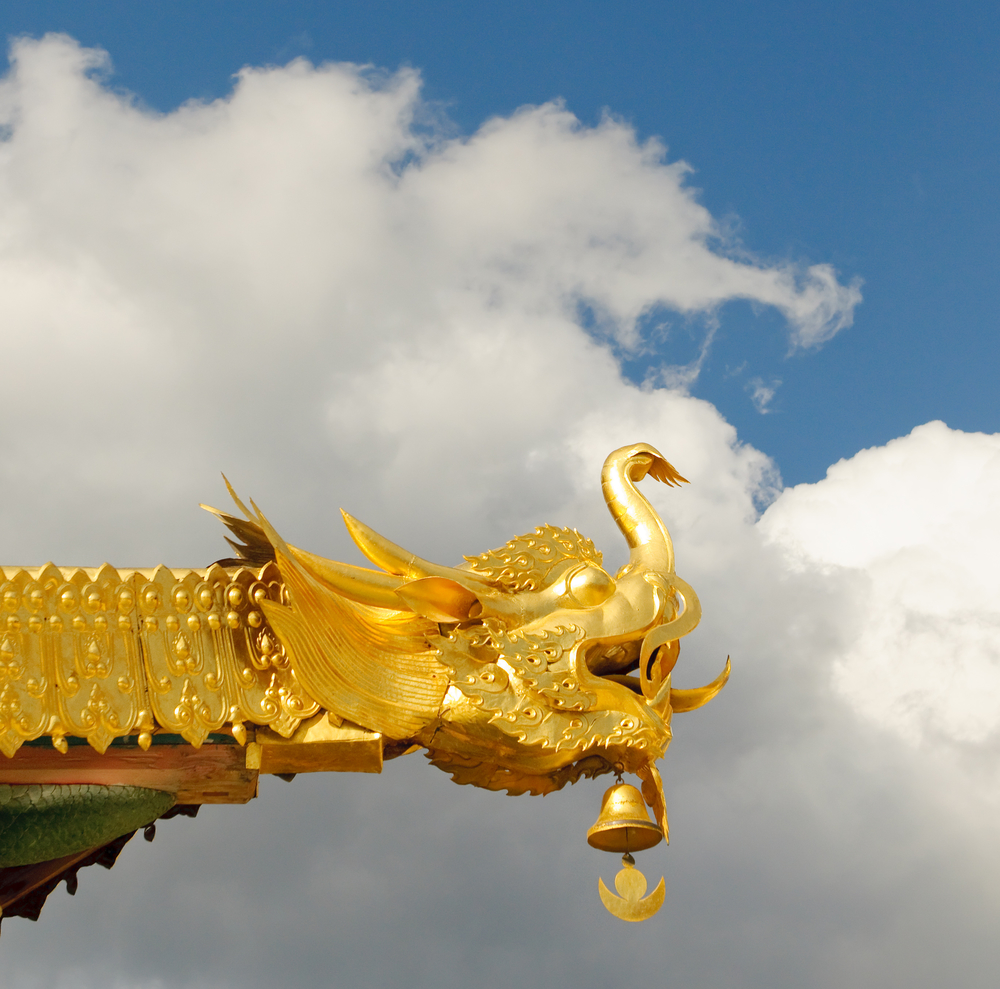
Resorts & Charted Courses in association with Abercrombie & Kent - Call 800-757-6422 for details.
This trip can be arranged as a private small-group or independent journey.
* Update: On August 31, 2018, He Shixiu, the Good Doctor of the Snow Mountain, passed away at his home in Baisha at age 97. His clinic, along with a herbarium and tribute to Dr. Ho and to the Flying Tigers, is maintained by his son, He Shulong. He Shulong’s son, Dr. Ho’s grandson, is also a doctor.






Condé Nast Traveler Award
Resorts & Charted Courses
"World's Top Travel Specialists"
SALLIE MASSIE for Destination MONACO
Four-Time Award Recipient - Condé Nast Traveler


